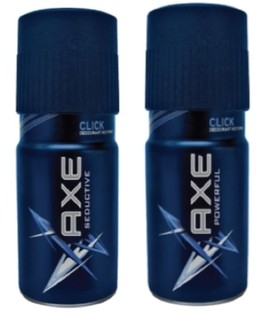No More Product Packaging
Neuromarketing is an ideal method for evaluating marketing stimuli since all commercial communication is ultimately judged in the consumer’s brain. This is also the case for product packaging.
Neurensics has used neuromarketing to investigate several packaging designs, resulting in a very important insight. The brain reacts much more advantageous to packaging that communicates the brand’s image than packaging that communicates brand-incongruent information. Perhaps it is better to no longer use the term product packaging, and instead introduce the term brand packaging. Everyone is familiar with the ritual of doing groceries. You walk into a supermarket, looking for a category of products. Then you find yourself standing in front of a shelf, faced with a multitude of choice. Previous research* has shown that the more options you have, the harder it is to make a decision. The abundance of choice leads to paralysis, as it were. Especially when it comes to products that all look more or less alike, such as marmalade, mayonnaise or lettuce. So how are we, as consumers, able to make a choice between products that are intrinsically almost the same?
Product packaging can help us in making an optimal decision. It serves as a signal to consumers, enabling the possibility of a quick choice. Hence, to compete with similar products a package design must stand out. However, this difference must be a subtle one, as the design must still adhere to the conventions of the product category. When taking these guidelines into account, what is the best way for a product design to stand out, and promote buying behavior? Neurensics used an MRI scanner to find out certain elements of product design can make a difference. One of the elements under investigation was text. For example, we studied the text on the product design of the deodorant brand Axe, to discover how word choice can increase a consumer’s buying intention.

While the original Axe deodorant design has no text, we put two words on the product packaging: 'seductive', which has a relationship with Axe’s brand image, and 'powerful', which is related to the product. Unlike the popular notion that copy on the packaging does not matter, Neurensics saw an increase in brain activation in regions that are important in determining purchase intention, when the word 'seductive' was used. In other words, a text that refers to a brand value of Axe is significantly more effective than a text that refers to product value.
It seems, therefore, that product packaging that communicates a brand’s image can help persuade a consumer to choose that brand. Neuroscientific research by Deppe and his colleagues** has shown how this brand induced process works in our brain. A brand is used as a shortcut, a somatic marker, that can be used to make an automatic and effortless choice. When consumers choose between brands, and one of the options is a consumer’s favorite brand then the choice process becomes quick and emotional. In fact, areas in the brain that are responsible for making rational decisions are deactivated by the sight of the consumer’s favorite brand.
The stronger the brand’s image is communicated, the faster the consumer is persuaded to buy the brand. Marketers would, therefore, do well in dropping the term product packaging to introduce the concept of brand packaging. This could potentially save a great deal of time and decision avoidance, the next time we do our groceries.
As a founding partner at Neurensics, Europe’s first neuro-economic research firm, Walter Limpens contributes daily to the practical applicability of neuromarketing. Neurensics uses fMRI techniques to ‘peek’ directly into the living brain of consumers, mapping out important subconscious thoughts.